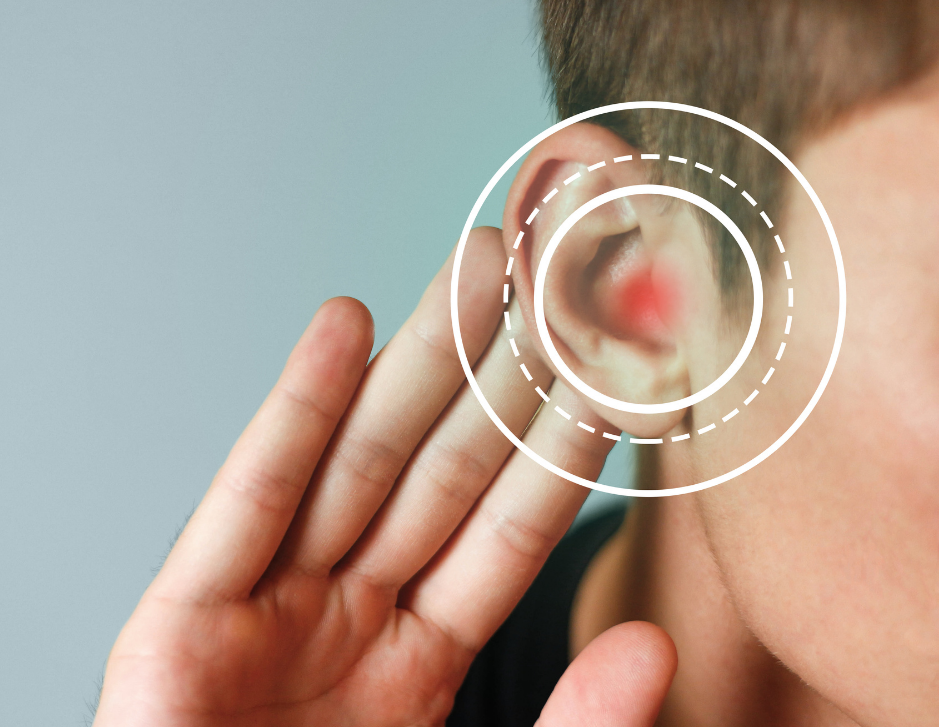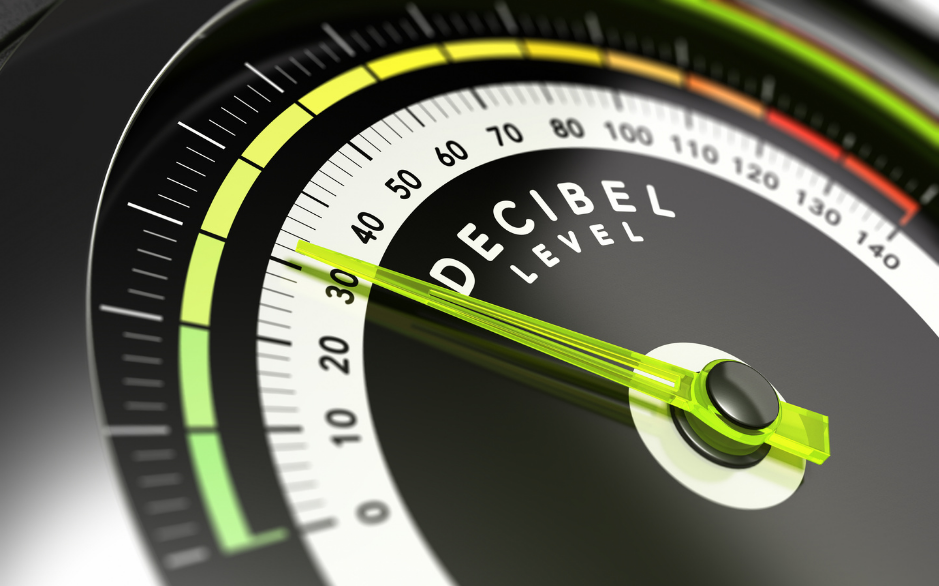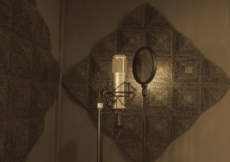Different sounds have different frequencies, and we hear lots of different frequencies every day. We usually refer to frequency as pitch and know, for example, that an earthquake has a much lower pitch than the sound of a mouse squeaking.
Frequency is very important and allows us to enjoy sounds, such as watching a movie, listening to music, or hearing our friends talk. It is one of the five characteristics of sound, along with wavelength, time-period, amplitude and speed.
But what are high frequency sounds? What are some examples of high frequency noise? And can humans hear high frequency noise? Below we have compiled a guide all about high frequency noise and what it really is, so keep reading on to find out more.
What Are High Frequency Sounds?
Sound frequency is the total number of waves produced in one second. The frequency is determined by the way in which sound waves oscillate whilst travelling to our ears, and the higher the frequency waves oscillate, the higher the pitch of the sound we hear.
While all sounds travel at the same speed in the same medium, they do not oscillate in the same way, which is why we hear different pitches based on the sound source. For example, a whistle blowing is a very high-pitched sound.
Sounds that oscillate a high frequency produce high frequency noise, which usually have a high pitch. High frequency noise is measured at about 2,000 Hz and higher, such as a scream or a mosquito buzzing. Sometimes, high frequency sounds are deafening, and sometimes humans cannot hear it at all.
Any frequency above 20,000 Hz is referred to as ultrasound. Dolphins are a good example of having one of the highest perception thresholds of any species, and this allows them to detect objects in the water that are way beyond their eyesight. They do this by sending out a high frequency sound (ultrasound), and interpret the echoes to determine what object the sound beam hit and where it is.

Examples Of High Frequency Noise
As we mentioned above, high frequency noise is measured at about 2,000 Hz and higher. Examples of high frequency noise include:
- Whistling
- Squealing
- Shouting
- Squeaking
- A mosquito buzzing
- Bird chirping
- Ticking stopwatch
- Plane flying
- Motorcycle
- Phone ringing
- Nails on a chalkboard
- The sounds “f”, “s” and “th”
- Glass breaking
What Is The Hearing Threshold?
The hearing threshold is the lowest intensity where a person begins to hear a sound. Humans can usually hear frequency range between 32 and 32,000 Hz at intensities of 10 dB and louder. The most important frequencies for speech and language are between 250 and 8,000 Hz and this is what is considered normal hearing range.
Usually, the younger you are, the higher the frequency you can hear. Some older people can even struggle hearing sounds over 4,000 Hz. The hearing threshold varies from person to person, which is why some people can hear some sounds and others cannot.
Humans can be affected if they are exposed to ultrasound frequency. Some people can experience nausea, dizziness, headaches, and fatigue.

High Frequency Hearing Loss
Hearing loss is usually caused by aging and most often affects someone’s ability to hear high frequency sounds. High frequency hearing loss can also be caused by exposure to loud noises or sounds at a high frequency for prolonged periods of time. This is the reason construction workers or those who work with loud machinery have to wear sound-cancelling headphones as they work, and why they often begin to lose their hearing at a younger age than others.
Sometimes, high frequency hearing loss is difficult to identify. Someone with this type of hearing loss will be able to follow along a normal conversation, but may have trouble hearing sounds such as “f”, “s” and “th”, which are a higher frequency. They may also have trouble with muffled sounds or sounds spoken by women or children, who naturally have a voice with a higher frequency.
Higher frequency hearing loss is more common than low frequency hearing loss. This is because the lower part of the inner ear translates high frequency sounds and the hair cells at the top of the inner ear translates lower frequency sounds. Damage usually happens from the bottom up, so higher frequency sounds are impacted first.
How Can You Block High Frequency Noise?
There is only so much we can do to block any type of noise. Noise is often most affected by how high the intensity of the sound is (how loud it is). For example, it is much easier to block out quiet TV noise from a next door room than it would be to block out the loud rumbling of a truck engine outside your house.
However, high frequency noise is generally easier to block than low frequency noise. This is often down to our ability to hear low frequencies better than high frequencies. You may find that if you are affected by a high frequency noise, the same noise may be inaudible to your friend because it is out of their hearing range.
Another reason is because, although sounds of the same volume pass though a wall, sounds lower in frequency will penetrate a surface more easily than sounds with high frequency. Low frequency sounds lose less energy as they pass through a solid object. This is for two reasons — their longer wavelength, and the fact that low frequency sounds create vibration in walls and this helps the passage of sound.
We can apply many of the same techniques we use for blocking out low frequency sound when we are trying to block out high frequency sound, although you will not have to use quite as many. For example, if you are trying to block sound from another room, you may want to increase the thickness of the wall in which the sound passes through, as well as use some form of sound-dampening material. Materials such as Mass Loaded Vinyl (MLV) or foam will help to reduce the amount of noise heard as it effectively absorbs the sound wave as it tries to pass through the wall.
You will also want to cover up any gaps and make the wall airtight, so sound cannot seep through. You should take into consideration all components of the room that need to be soundproofed — door, windows, wall, floor and ceiling.
High Frequency Noise FAQs

What is the difference between intensity and frequency of sound?
If a sound is loud, it has high intensity, but this does not tell us what the frequency of the sound is. The intensity of the sound is the amount of energy of a vibration. It is measured in decibels (dB), and affects how loud the sound is. Frequency is the total number of waves produced in one second and affects the pitch of the sound.

How do you measure the frequency of sound?
Frequency is measured in hertz (Hz). The total number of waves produced in one second is the frequency of a sound wave. This is the same as the number of vibrations counted per second as they transmit the sound.
Sound wave frequencies can be measured with a frequency counter or with a spectrum analyzer. These devices work by using a microphone to convert the sound wave into an electrical signal.
How do you test for high frequency hearing loss?
The ability to hear high frequency and low frequency sounds can be tested with a hearing test. There are three common ways to be tested: behavioral testing in a sound booth, otoacoustic emission (OAE) testing, and auditory brainstem response (ABR) testing.
Behavioral testing in a sound booth is a child-friendly way of testing for hearing loss and uses headphones. Through the headphones, the child will hear tone and then press a key on the computer or clap their hands or performs another action, and their hearing is assessed.
OAE testing is done to find out how well your inner ear works by measuring otoacoustic emissions, short OAEs, which are sounds the inner ear makes when responding to a sound. ABR testing is less common, and uses electrodes placed around the head to measure the brain’s response to sound. This is normally only used when audiologists suspect your hearing loss could be caused by your auditory nerves or caused by a neurological disorder.
What should I do if I am experiencing hearing loss?
The best thing to do is to take a trip to your local audiologist and have a hearing test. These tests are simple and very effective, and treatment can be offered to you. Hearing loss is common as you age, and over 48 million Americans have some degree of hearing loss. There are many treatments for this, including hearing aids.
High Frequency Sounds Summary
High frequency sound is any noise measured at a frequency above 2,000 Hz, including sounds such as a bird chirping, glass breaking, and even certain sounds such as “f”, “s” and “th”. While humans can hear high frequency sounds, as we get older hearing damage occurs and we lose our hearing ability slightly. High frequency sounds are easier to block out than low frequency sounds, because sounds lower in frequency will penetrate a surface more easily than sounds with high frequency.




